-
-
FeaturesคุณสมบัติPenyelesaianRecursosFiturCaracterísticas精选功能功能特點المزايا
-
Solutionsโซลูชั่นPenyelesaianSoluçõesSolusiSoluciones解决方案解決方案الحلول
-
IntegrationsการผสานรวมIntegrasiIntegraçõesIntegrationsIntegraciones集成整合服務دمج مع تطبيقات أخرى
-
Affiliate/Partnersพันธมิตร/พันธมิตรทรัพยากรAfiliasi/Rakan KongsiAfiliados/ParceirosAfiliasi/MitraAfiliados/Partners联盟/合作伙伴聯盟/合作夥伴شريك
-
ResourcesจองการสาธิตSumberRecursosSumber dayaRecursosالموارد資源中心
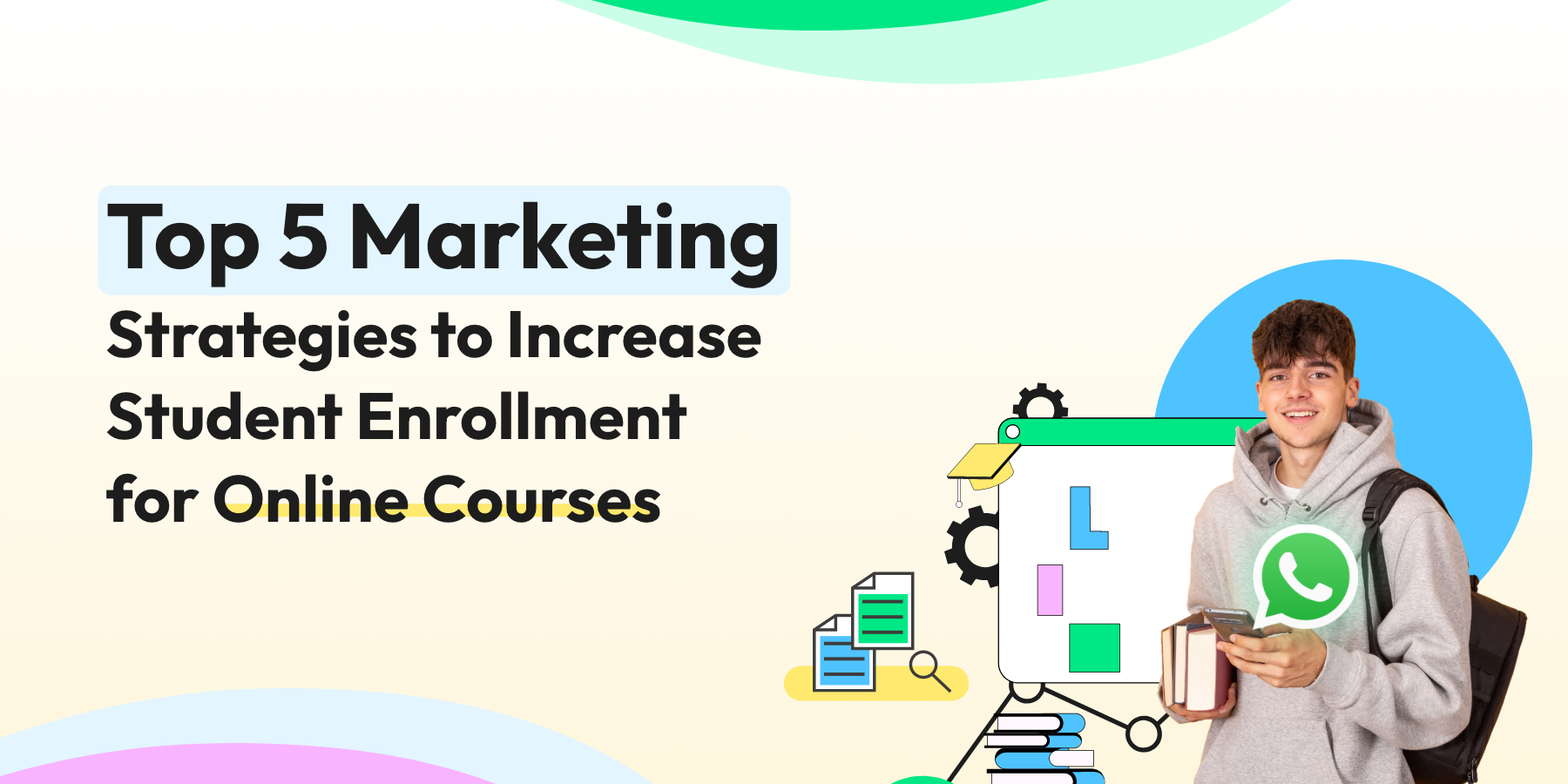
Top 5 Marketing Strategies to Increase Student Enrollment for Online Courses
You’ve done it. After countless sleepless nights, endless cups of coffee, and more screen time than you’d care to admit, your online course is finally ready. It’s a masterpiece – packed with your expertise, engaging content, and real-world value. You know it’s one of the best courses out there in your field. But here’s the kicker: you’re struggling to get students to enroll.
Sound familiar? You’re not alone. Many course creators find themselves in this frustrating situation. Your course has everything it needs to succeed, except for one crucial element: visibility. Today, it’s not enough to create great content. You need to satisfy the algorithms that decide what reaches your potential students and what doesn’t.
But don’t worry – we’ve got your back. In this article, we’ll dive into the top 5 marketing strategies to increase student enrollment for your online courses. These tactics will help you navigate the digital landscape, increase your course’s visibility, and finally connect with the students who are out there, eager to learn what you have to teach. Ready to turn your hard work into enrollments? Let’s get started!
Drive Student Enrollment with WhatsApp Marketing
With its wide reach and high engagement rates, WhatsApp has become an ideal tool for e-learning businesses to increase student enrollment. On WhatsApp, you can connect with potential students and nurture leads on a medium that they like and are present most of the time — WhatsApp.
Let’s explore how you can harness the power of WhatsApp marketing to increase online course enrollments.
a. Automated Reminders and Announcements
One of the most effective ways to use WhatsApp for your e-learning business is through automated reminders and announcements. Many online course providers struggle with engagement and attendance rates for their free webinars and courses.
With the help of a WhatsApp Business API solution like Wati, you can set up automated WhatsApp reminders to:
- Increase webinar attendance
- Boost engagement for online classes
- Send timely announcements about new courses, certifications, or deadlines

For example, you could set up a sequence of reminders leading up to a webinar:
- Initial confirmation message upon registration
- 24-hour reminder with joining instructions
- 1-hour reminder to grab attention just before the event starts
Wati also helps you to set up this sequence of reminders with its sequence feature. To know more about how Wati’s Sequence feature works, read this support article.
This simple strategy can significantly impact your attendance rates and, ultimately, your course enrollment.
Also Read: WhatsApp for Education: Empowering Learning in the Digital Era
b. Personalize Communication at Scale
WhatsApp allows you to send personalized messages to thousands of contacts without getting blocked. This is crucial for an e-learning business like yours that needs to maintain regular communication with its student base.
With the help of Wati’s WhatsApp broadcast feature, you can:
- Send tailored course recommendations based on student interests.
- Provide personalized progress updates and encouragement.
- Share success stories, testimonials, and achievements of past students, focusing on those relevant to each recipient’s career goals or industry.
💡 Pro Tip: Segment your audience based on course progress or interests. Send tailored messages to each segment, such as extra resources for struggling students or advanced content for high performers.
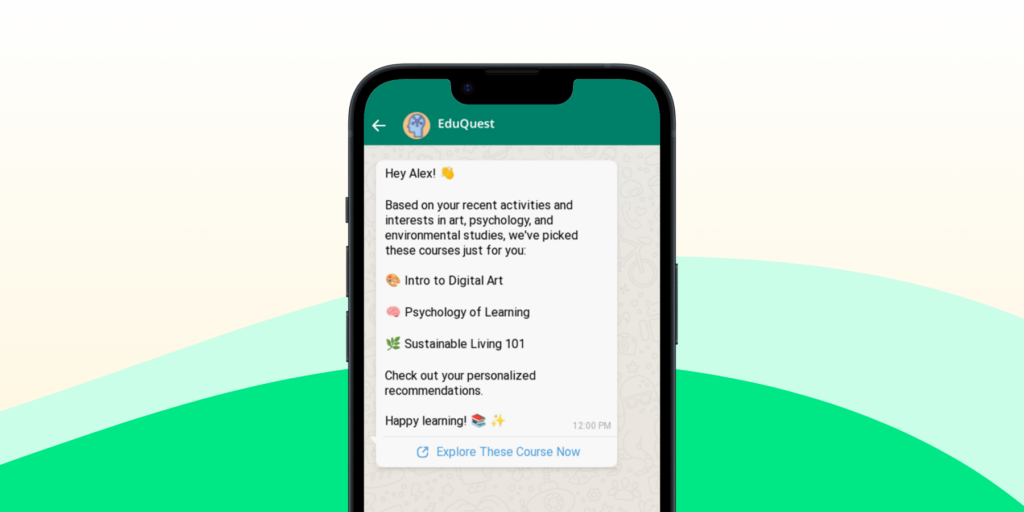
By leveraging features like custom attributes and audience segments, you can ensure that each message feels personal and relevant to the recipient.
c. Limited-Time Offers and Flash Sales
WhatsApp is an excellent channel for running limited-time offers and flash sales to create urgency and boost enrollments.
On WhatsApp, you can consider:
- Sending out exclusive discounts to your WhatsApp subscriber list
- Running last-minute promotions to fill remaining spots in upcoming courses
- Creating special bundle offers for related courses
💡 Pro Tip: Create a sense of urgency by using countdown timers in your WhatsApp messages for flash sales. This visual cue can significantly boost conversion rates.
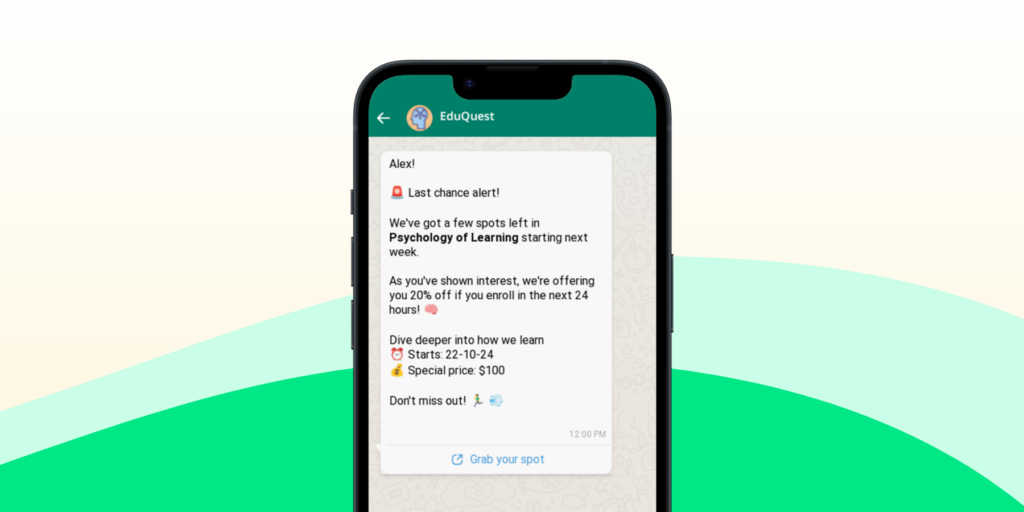
The immediacy of WhatsApp messages makes it ideal for time-sensitive offers that can drive quick decision-making among potential students.
Also Read: Everything You Need to Know About WhatsApp Elearning
d. Click-to-WhatsApp (CTWA) Ads
Click-to-WhatsApp (CTWA) ads offer a powerful way to connect with potential students directly and instantly. These ads, which can be run on platforms like Facebook and Instagram, allow users to start a WhatsApp conversation with your business directly from the ad. By reducing friction in the communication process, you’re more likely to convert interested leads into enrolled students.
To maximize the effectiveness of CTWA ads, use targeted campaigns to reach your ideal students.
For instance, you have a finance course and you are targeting young professionals interested in personal finance and investing. For such a course, you can design ads with eye-catching visuals, clear value props highlighting practical finance skills, and CTAs like “Enroll Now” as shown in the image below.
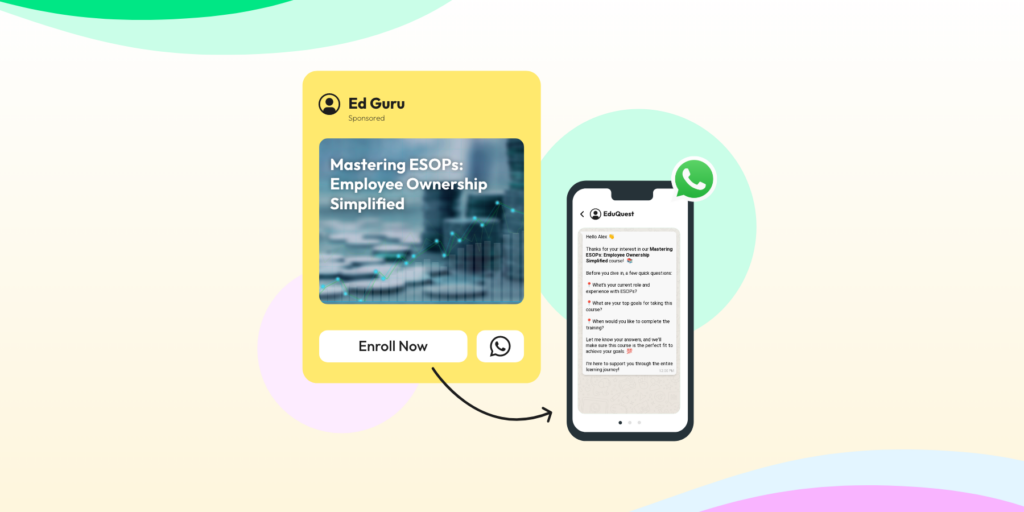
Once a prospect clicks on your CTWA ad, set up automated responses in WhatsApp to provide an instant welcome message, share a brief overview of your course offerings, and ask qualifying questions. This automation ensures that every lead receives immediate attention, even outside of business hours.
How to Setup CTWA Ads on Wati?
Setting up Click-to-WhatsApp (CTWA) Ads on Wati is a straightforward process.
For detailed instructions, you can refer to the video below.
But that’s not all – we’ve created a comprehensive CTWA playlist on YouTube to help you understand:
- The benefits of using CTWA
- Best practices for implementing CTWA
- Techniques for measuring and optimizing your CTWA campaigns
This resource is designed to give you a thorough understanding of CTWA and how to make the most of it in your marketing efforts.
Also Read: A Complete Guide on How to Sell Online Courses
e. Analytics and Optimization
To maximize the effectiveness of your WhatsApp marketing efforts, make use of analytics tools to track:
- Message open rates and engagement levels
- Conversion rates from WhatsApp interactions to course enrollments
- Most effective message types and timing for your audience
💡 Pro Tip: Set up A/B tests for your WhatsApp messages. Test different message lengths, tones, or call-to-action phrases to identify what resonates best with your audience.
Use these insights to continuously refine your WhatsApp marketing strategy and improve your results over time.

If you’re using Wati, you can see all these metrics and many more on Wati’s Broadcast Analytics.
Our system provides valuable insights into your course promotion efforts like:
- Get precise data on how many prospective students actually received your course announcement messages.
- Track when and how many potential enrollees are interacting with your course links, giving you a clear picture of engagement levels.
- Identify which messages are most effective in attracting student interest, allowing you to refine your communication strategy for better enrollment results.
To see how it exactly works on Wati, you can watch the video below.
These analytics tools empower you to make data-driven decisions, enhancing your ability to connect with potential students and boost course registrations.
f. Lead Qualification Chatbots
Implementing a lead qualification WhatsApp chatbot can improve conversion rates and increase online enrollment for your course
These chatbots can increase student enrollment by:
- Engaging potential students 24/7, even outside of business hours
- Qualifying leads by asking targeted questions about their learning goals and budget
- Providing instant information about course offerings and pricing
- Scheduling calls with human sales representatives for high-quality leads
💡 Pro Tip: Program your chatbot to ask open-ended questions that encourage detailed responses. This not only helps in better lead qualification but also provides valuable insights into student needs and preferences.
You can create these WhatsApp chatbots using Wati’s no-code chatbot builder.
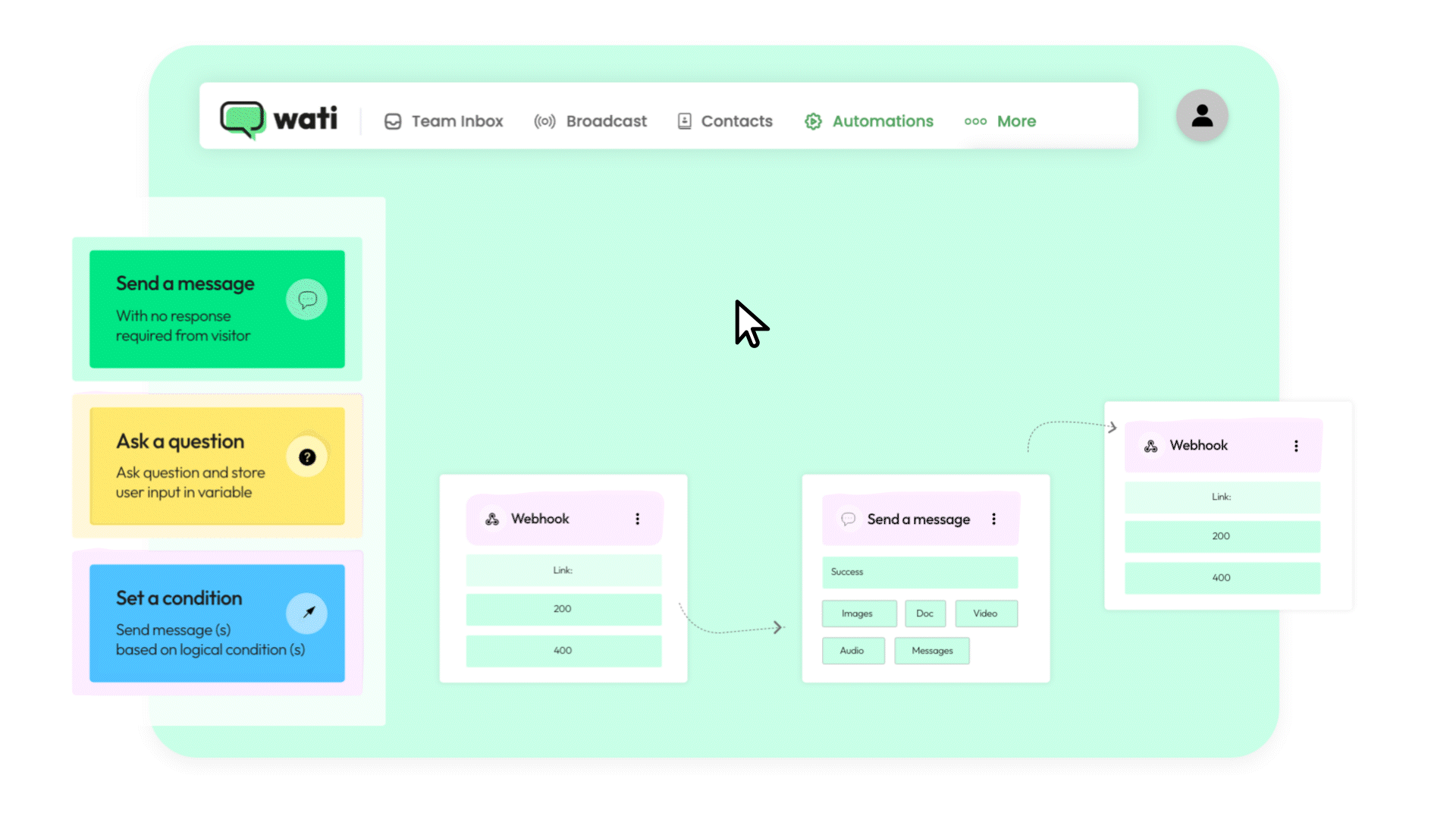
To know how you to create a WhatsApp chatbot on Wati, watch this video below 👇
This automated approach ensures that your sales team focuses their efforts on the most promising leads, increasing efficiency and student enrollment rates.
Host Engaging Free Webinars
Free webinars are one of the most successful e-learning marketing strategies to increase student enrollment.
By organizing free webinars consistently, you can:
- Demonstrate value upfront
- Build trust with potential students
- Create a sense of community
- Provide a taste of your teaching style
Pro Tip 💡For starters, you can host 3-4 webinars every month. These events can attract hundreds of attendees, making them a prime opportunity for course promotion.
a. Maximizing Webinar Attendance
Increasing webinar attendance is crucial for boosting paid course conversions.
Let’s have a look at some of the effective strategies.
i. Leverage WhatsApp Marketing
- Use WhatsApp Business API to send bulk reminders without getting blocked
- Implement automated WhatsApp reminders to boost attendance
- Create limited-time offers in the last 2-3 days before the webinar
Also Read: How to Increase Webinar Attendance with WhatsApp
ii. Utilize Multi-Channel Promotion
- For younger demographics, leverage YouTube, Instagram, and Facebook Ads to showcase course previews and student testimonials.
- When targeting working professionals, prioritize LinkedIn and Google Ads for a more business-oriented approach.
- If your courses cater to parents or older learners, emphasize WhatsApp marketing for its accessibility and personal touch.
iii. Personalize Your Approach
- Divide potential students based on career stage, industry, or learning goals and craft targeted messages addressing specific needs of each segment.
- Leverage CRM tools to assign team members to specific leads or groups, enabling personalized tracking and communication throughout the enrollment process.
b. Converting Attendees to Paid Students
The real magic happens at the end of your free webinar.
Here’s how to maximize conversions:
i. Deliver Exceptional Value
Make sure your free content is top-notch. This builds trust and leaves attendees wanting more.
ii. Create Urgency
Offer a limited-time discount for your paid course, available only to webinar attendees.
iii. Showcase Success Stories
Share testimonials or case studies from previous students who’ve benefited from your courses.
iv. Implement a Follow-Up Strategy
- Use WhatsApp chatbots for lead qualification post-webinar
- Set up automated email sequences to nurture leads
Pro Tip💡: Many e-learning businesses struggle with student engagement due to the casual nature of online learning.
You can address this during your webinar by:
- Highlighting the importance of commitment
- Showcasing your support systems (e.g., 1:1 mentorship, weekly sync-ups)
- Demonstrating how your course structure maintains engagement
By mastering the art of hosting engaging free webinars, you’re not just filling seats—you’re creating a pipeline of potential students eager to enroll in your paid courses. Remember, in the world of e-learning, your webinar might be the first “class” a student attends. Make it count!
Boost Course Enrollment with Digital Advertising
Digital advertising is a powerful tool for you to boost online enrollments. By running targeted ads on platforms like Google, Facebook, Instagram, and YouTube, you can effectively reach potential students online.
Ads allow you for precise audience targeting based on factors like demographics and interests, ensuring course offerings are shown to those most likely to enroll. The measurable nature of digital advertising enables you to track performance, make real-time adjustments, and optimize your spending.
Whether attracting new prospects or re-engaging past visitors, a strategic ad campaign can significantly increase:
- Your course’s visibility
- Generate quality leads
- Drive enrollment numbers
a. Google Ads: The Search Giant
Google Ads is like the Swiss Army knife of digital advertising. With its vast reach and diverse ad formats, it’s a powerhouse for businesses of all sizes.

Key features:
- Search ads
- Display network
- YouTube ads
- Shopping ads
Targeting Strategies for Google Ads:
- Keyword targeting: The bread and butter of search ads. Choose your keywords wisely!
- Audience targeting: Use in-market audiences, affinity audiences, or create your own custom audiences.
- Demographic targeting: Age, gender, parental status, and more.
- Geographic targeting: Go global or stay local – the choice is yours.
🔍Pro Tip: Combine keyword and audience targeting for hyper-relevant ads. For example, target “young professionals” who search for “learn digital marketing online” to maximize your ad’s impact for your digital marketing course.
b. Facebook Ads: Social Media’s Advertising Giant
With over 3 billion monthly active users, Facebook is a goldmine for advertisers. Its robust targeting options allow you to reach your ideal audience with laser precision.

Ad formats to explore:
- Image ads
- Video ads
- Carousel ads
- Instant Experience ads
💡 Did you know? Facebook’s algorithm favors native content. Try creating ads that blend seamlessly with users’ feeds for better engagement.
Targeting Strategies for Facebook Ads:
- Interest-based targeting: Reach people based on their interests, hobbies, and pages they like.
- Behavioral targeting: Target users based on purchase behaviors, device usage, and more.
- Lookalike audiences: Find new students who are similar to your best customers.
- Custom audiences: Retarget your website visitors or customer list.
Pro Tip 💡: Use the Meta Pixel to create highly effective retargeting campaigns. For instance, show a special offer to users who visited your website but didn’t make a purchase.
c. Instagram Ads: Visual Storytelling at Its Finest
If your e-learning brand has a strong visual component, Instagram ads are your new best friend. With high engagement rates and a younger demographic, it’s perfect for building brand affinity.
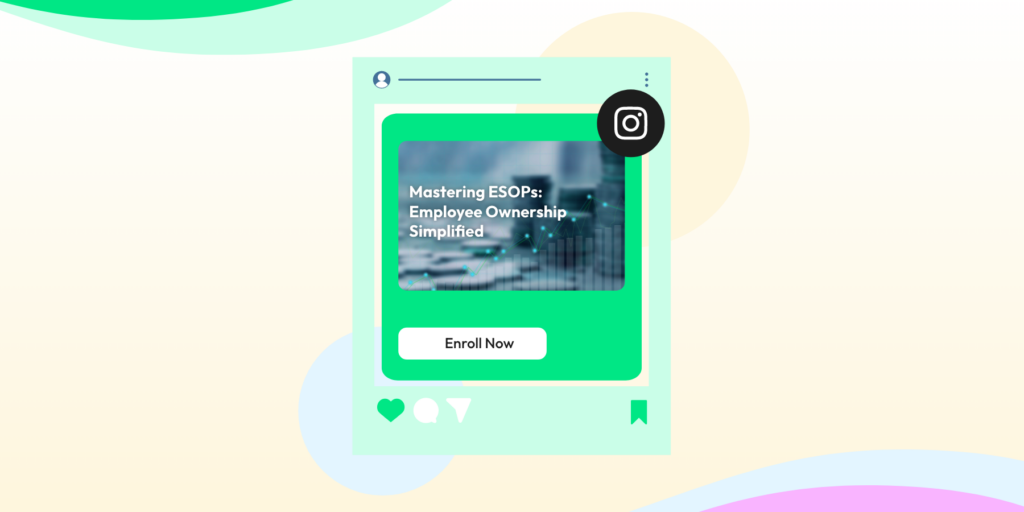
Popular ad types:
- Story ads
- Reels ads
- Shopping ads
- Explore ads
Targeting Strategies for Instagram Ads:
Instagram uses Facebook’s robust targeting system, so you have access to similar options:
- Demographic targeting: Reach users based on age, gender, location, and language.
- Interest and behavior targeting: Connect with users based on their activities on and off Instagram.
- Custom audiences: Retarget your existing customers or website visitors.
- Lookalike audiences: Expand your reach to users similar to your best customers.
Pro Tip 💡: Leverage user-generated content in your ads to increase authenticity and engagement. For example, feature student testimonials showcasing how your course led to their success.
d. YouTube Ads: Engage Your Audience with Video
With over 2.49 billion logged-in monthly users, YouTube offers a massive opportunity to reach your target audience through video.
Let’s dive into the world of YouTube advertising!
Popular YouTube ad formats:
- Skippable in-stream ads
- Non-skippable in-stream ads
- Bumper ads
- Discovery ads
- Masthead ads
🎬 Pro tip: Hook your audience in the first 5 seconds of your skippable ads. That’s all the time you have before they can hit that skip button!
Targeting Strategies for YouTube Ads:
- Demographic targeting: Reach viewers based on age, gender, parental status, and household income of your target audience.
- Interest-based targeting: Connect with students based on their interests and online behaviors.
- Topic targeting: Place your ads on videos related to specific topics that you offer in the course.
- Keyword targeting: Show your ads on videos related to specific keywords that either cater to your target audience or are related to your course offerings.
- Placement targeting: Select YouTube channels or videos popular with your target audience to display your ads.
- Remarketing: Re-engage viewers who have interacted with your videos or channel.
💡Pro Tip: Use YouTube’s “Find My Audience” tool to discover insights about your target audience’s interests and behaviors on the platform.
Optimization Strategies for YouTube Ads:
- Create compelling thumbnails: Your thumbnail is like a mini-billboard for your ad. Make it eye-catching!
- Optimize for mobile: With over 70% of YouTube watch time coming from mobile devices, ensure your ads look great on smaller screens.
- Use end screens and cards: Drive engagement by adding interactive elements to your video ads.
- Experiment with different ad lengths: Test various durations to find what works best for your message and audience.
- Leverage sequential advertising: Tell a story across multiple ads to keep viewers engaged over time.
💡 Did you know? YouTube offers a feature called TrueView for Action, which allows you to add prominent CTAs and headline text overlays to your video ads. It’s perfect for driving conversions!
YouTube and Google Ads Synergy:
Remember, YouTube ads are managed through the Google Ads platform, which means you can:
- Use the same audience lists across YouTube and Google Search or Display campaigns.
- Remarket to users who have viewed your YouTube ads with ads on the Google Display Network.
- Create a holistic video strategy that spans both YouTube and Google’s video partners.
By incorporating YouTube into your digital advertising mix, you’re opening up a world of creative possibilities to engage your audience. Whether you’re looking to build brand awareness, drive website traffic, or increase.
e. Bringing It All Together: A Multi-Platform Approach
Now that we’ve explored Google Ads, Facebook Ads, Instagram Ads, and YouTube Ads, let’s recap how to create a cohesive multi-platform strategy:
- Understand platform strengths:
- Google Ads: Intent-based targeting
- Facebook Ads: Detailed audience targeting
- Instagram Ads: Visual engagement
- YouTube Ads: Immersive video experiences
- Align ad formats with campaign objectives:
- Awareness: YouTube bumper ads, Instagram Stories
- Consideration: Facebook carousel ads, YouTube in-stream ads
- Conversion: Google search ads, Instagram Shopping ads
- Create a consistent brand message: Ensure your messaging is cohesive across all platforms while tailoring the content to each platform’s unique environment.
- Leverage cross-platform remarketing: Use data from one platform to inform your targeting on another. For example, remarket to YouTube viewers on Facebook or Instagram.
- Test and optimize continuously: What works on one platform might not work on another. Always be testing, learning, and refining your approach.
Remember, the key to digital advertising success is to stay agile and data-driven. Keep experimenting with these platforms and strategies, and you’ll be well on your way to achieving your marketing goals!e student enrollment, YouTube ads can be a powerful tool in your digital marketing arsenal.
f. Master the Art of A/B Testing
Think you’ve got the perfect ad? Well, there’s only one way to find out – test it! A/B testing is your secret weapon for optimization.

- Create two versions of your ad with one key difference
- Run both versions simultaneously
- Analyze the results to see which performs better
- Rinse and repeat!
Remember, even small tweaks can lead to big course enrollments. Try different headlines, images, or calls-to-action. You never know what might resonate with your audience!
g. Embrace the Mobile Revolution
Did you know that mobile devices account for over 50% of web traffic worldwide? If your ads aren’t mobile-friendly, you’re missing out on a huge chunk of potential customers.
Here’s how to optimize for mobile:
- Responsive design: Ensure your landing pages look great on any screen size
- Short and sweet: Keep your ad copy concise and to the point
- Fast loading times: Nobody likes waiting – optimize your page speed for mobile users
h. Harness the Power of Retargeting
Ever browsed for a product online, only to see ads for it everywhere you go? That’s retargeting in action, and it’s incredibly effective for e-learning business as well.
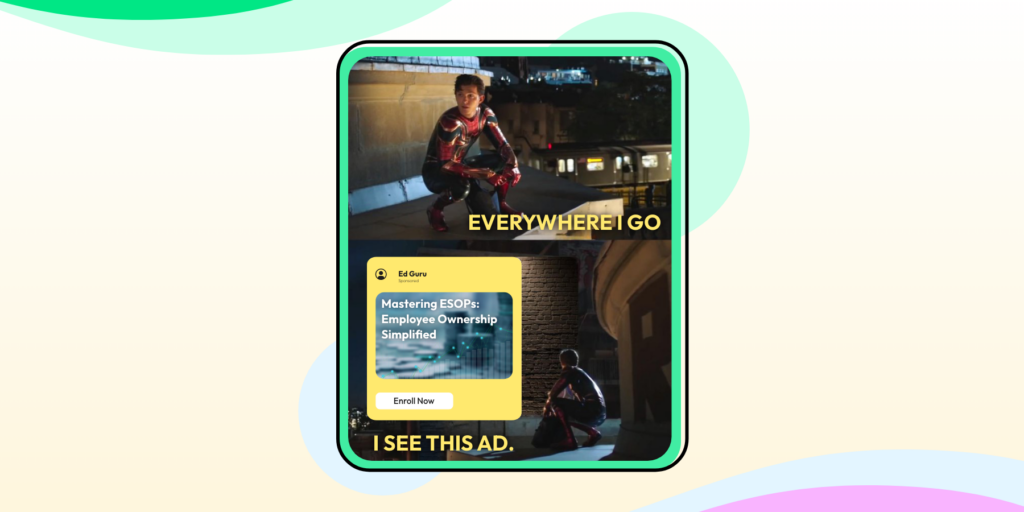
💡Did You Know?: Retargeted ads have a 10x higher click-through rate compared to regular display ads!
To make the most of retargeting:
- Segment your audience: Don’t treat all visitors the same. Tailor your ads based on their behavior.
- Set frequency caps: Avoid ad fatigue by limiting how often a user sees your ad.
- Offer incentives: Give people a reason to come back, like a special discount or free shipping.
i. Dive into Data-Driven Decision Making
In digital advertising, gut feelings just won’t cut it. It’s all about the data. And to make data-driven decisions, you can track key metrics like:
- Click-through rate (CTR)
- Conversion rate
- Cost per acquisition (CPA)
- Return on ad spend (ROAS)
Use these metrics to guide your optimization efforts. Which ads are performing well? Which ones are falling flat? Let the numbers light the way!
Implement an Effective Email Marketing Campaign
a. Segmentation is Key
When running an email marketing campaign for your online courses, segmentation is crucial. Break down your audience based on factors like:
- Course interests
- Engagement level
- Purchase history
By tailoring your messages to specific segments, you’ll see higher open rates and better conversions. For instance, send course recommendations based on past purchases or engagement with free webinars.
💡 Pro Tip: Use behavioral triggers to create micro-segments. For example, segment users who clicked on a specific course link but didn’t enroll, and send them a targeted follow-up email with more information or a special offer.
b. Personalization Beyond First Names
While using first names is a good start, take personalization further:
- Reference past course completions
- Mention upcoming webinars in their area of interest
- Highlight achievements or milestones
This level of personalization shows you understand your subscribers’ needs and goals, fostering a stronger connection.
c. Optimize for Mobile
With many learners checking emails on-the-go, mobile optimization is non-negotiable. Ensure your emails:
- Have a responsive design
- Use larger fonts for easy reading
- Feature clear, tappable call-to-action buttons
Test your emails on various devices to guarantee a seamless experience for all subscribers.
💡 Pro Tip: Use a single-column layout for your emails to ensure smooth scrolling on mobile devices. Also, place your primary call-to-action (CTA) button above the fold for maximum visibility.
d. Leverage Automation
Set up automated email sequences to nurture leads and keep students engaged:
- Welcome series for new subscribers
- Course completion congratulations
- Re-engagement campaigns for inactive users
- Upsell sequences for related courses
Automation ensures timely, relevant communication without constant manual effort.
e. Focus on Value, Not Just Promotion
While promotional emails have their place, focus on providing value in every message:
- Share free learning resources
- Offer study tips and strategies
- Highlight student success stories
By consistently delivering value, you’ll build trust and keep subscribers engaged, making them more receptive when you do promote paid offerings.
💡 Pro Tip: Implement the 80/20 rule in your email content strategy. Aim for 80% educational/valuable content and 20% promotional content to maintain subscriber interest and trust.
f. A/B Testing for Continuous Improvement
Like digital advertising, A/B testing is essential in email marketing as well.
Below is a table that shows different elements of an email you can regularly test to optimize performance.
| Element to Test | Examples |
| Subject lines | Question vs. statement, length, emojis |
| Send times | Morning, afternoon, evening, weekdays vs. weekends |
| CTA buttons | Color, text, placement |
| Email content | Long-form vs. short-form, image placement |
Use the insights gained to refine your approach and boost engagement over time.
By implementing these strategies, you can create email marketing campaigns that not only drive course enrollments but also establish long-term relationships with learners.
Enhance Your Content Marketing Strategy
A robust content marketing strategy can be the key to attracting and enrolling more students. Let’s explore some effective tactics to elevate your content game and boost enrollment numbers.
a. Leverage Video Content
Video content is king in the e-learning space. Many successful online course creators, like those on YouTube and Instagram, have built their entire businesses around video.
Here’s why you should embrace it:
- Engagement: Videos capture attention more effectively than text alone.
- Credibility: Showing your face builds trust with potential students.
- Versatility: Use videos for course previews, student testimonials, and explainer content.
💡 Pro Tip: Create a series of “micro-learning” videos (1-2 minutes long) that tackle specific topics or skills. Share these on social media to showcase your teaching style and course content quality.
b. Create a Content Calendar
Consistency is key in content marketing. Develop a content calendar that includes:
- Regular blog posts on topics relevant to your courses
- Social media updates across platforms (YouTube, Instagram, Facebook)
- Email newsletters with valuable tips and course information

By maintaining a steady stream of high-quality content, you’ll keep your brand top-of-mind for potential students.
💡 Pro Tip: Use the “content pillar” approach. Create one comprehensive piece of content (e.g., a detailed blog post) and then break it down into multiple smaller pieces for various platforms (social media posts, short videos, infographics).
Offer Value-Added Content
Go beyond just promoting your courses. Provide free, valuable content that demonstrates your expertise:
- Blog articles addressing common questions in your field
- Short video tutorials on YouTube or Instagram
- Downloadable resources like checklists or templates
This approach builds trust and positions you as an authority in your niche, making potential students more likely to enroll in your paid offerings.
💡 Pro Tip: Host live Q&A sessions or “office hours” on platforms like Instagram Live or YouTube. This interactive content builds community and showcases your expertise in real-time.
Optimize for Search Engines
Make sure your content is discoverable by implementing SEO best practices:
- Research and use relevant keywords in your content
- Optimize your website’s meta titles and descriptions
- Create long-form, in-depth content that addresses user queries
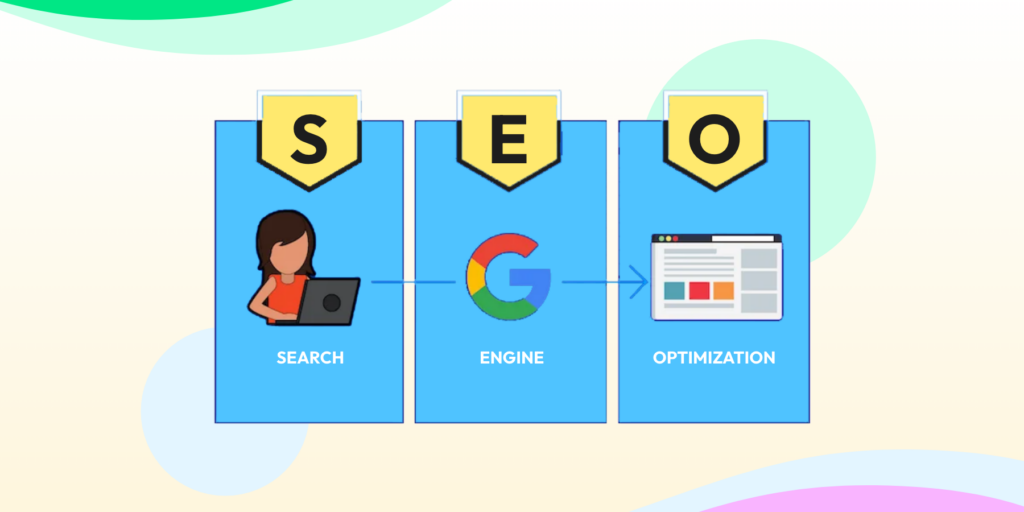
By improving your search engine visibility, you’ll attract more organic traffic and potential students to your online courses.
💡 Pro Tip: Focus on creating “Content Hubs” for your main course topics. These comprehensive, regularly updated pages can become authoritative resources in your field, boosting your SEO and attracting potential students.
Conclusion
To increase student enrollment for your online courses, you need to use different marketing strategies together. Try things like WhatsApp marketing, free online classes, targeted ads, emails, and helpful content. These methods can help more people find and join your courses.
I understand that these multiple marketing strategies can be overwhelming. But you can always start small by picking one or two strategies that fit your audience best. Then, slowly add more as you go. Many course creators find WhatsApp marketing really useful because it’s personal and gets people’s attention. You might want to try a tool like Wati to make your WhatsApp marketing easier and more effective. Keep track of what works and make changes as needed. If you stick with it and keep improving, you’ll see more and more students signing up for your courses.
FAQs
What are some cost-effective marketing strategies to increase student enrollment for small e-learning businesses?
Small e-learning businesses can employ several cost-effective strategies to increase student enrollment:
- Leverage social media marketing to build a community and showcase your courses
- Implement referral programs to encourage word-of-mouth marketing
- Collaborate with influencers or industry experts for cross-promotion
- Utilize content marketing through blogs, podcasts, or YouTube videos to demonstrate expertise
- Offer limited-time free trials or mini-courses to give potential students a taste of your content
How can I create a comprehensive marketing plan to increase student enrollment?
To create a comprehensive marketing plan:
- Define your target audience and unique selling proposition
- Set clear, measurable enrollment goals
- Choose a mix of marketing channels (e.g., social media, email, paid advertising)
- Develop a content strategy aligned with your courses
- Create a timeline for implementation
- Allocate budget and resources
- Establish KPIs to measure success
- Regularly review and adjust your plan based on performance
What are some effective strategies for increasing student enrollment in niche or specialized courses?
For niche or specialized courses:
- Partner with industry associations or professional groups
- Attend or sponsor relevant industry events
- Create targeted content addressing specific pain points in your niche
- Use LinkedIn for B2B marketing if your course is career-oriented
- Leverage case studies and success stories from past students
- Offer specialized certifications or accreditations
- Use highly targeted PPC advertising to reach your specific audience
How can I improve online enrollment conversion rates for my e-learning courses?
To improve online enrollment conversion rates:
- Simplify the enrollment process, reducing steps where possible
- Offer multiple payment options
- Use trust signals like money-back guarantees or free trial periods
- Implement exit-intent popups with special offers
- Use scarcity tactics like limited-time discounts or limited seats
- Provide clear, compelling course descriptions and outcomes
- Use social proof through student testimonials and success stories
- Optimize your landing pages for mobile devices
What are some innovative ways to increase student enrollment that go beyond traditional marketing?
Some innovative approaches include:
- Gamification: Create challenges or contests related to your course content
- Virtual reality tours: Offer immersive experiences of your learning environment
- Chatbots: Use AI-powered chatbots for 24/7 enrollment assistance
- Micro-learning teasers: Offer bite-sized lessons to showcase course value
- Personalized video invitations: Send customized video messages to potential students
- Interactive course previews: Develop engaging demos of your course content
- Community-building events: Host virtual meetups or study groups for prospective students
How can I measure the effectiveness of my e-learning enrollment marketing strategies?
To measure effectiveness:
- Track key metrics like Cost Per Enrollment (CPE), Conversion Rate, and Return on Ad Spend (ROAS)
- Use Google Analytics to monitor website traffic and user behavior
- Implement UTM parameters to track the performance of different marketing channels
- Conduct surveys to understand how new students discovered your courses
- Use A/B testing to compare the effectiveness of different marketing messages or designs
- Monitor social media engagement and growth
- Analyze email marketing metrics like open rates, click-through rates, and conversions
What are some common mistakes to avoid when trying to increase student enrollment for online courses?
Common mistakes to avoid include:
- Neglecting to define a clear target audience
- Overpromising course outcomes
- Ignoring the importance of mobile optimization
- Failing to provide clear value propositions
- Neglecting post-enrollment engagement and retention strategies
- Relying too heavily on a single marketing channel
- Not leveraging data and analytics to inform marketing decisions
- Forgetting to nurture leads through the entire enrollment funnel
Latest Comments